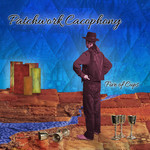The Art of the Album
The Art of the Album
With the prevalence of play lists, random shuffles and digital “singles” downloads of individual tracks, the album can look more and more like an anachronism. Conceived in an era when putting a single on a record player took almost as long as listening to it, and with a long playing record having a fixed manufacturing cost no matter how much music it contained (up to the limits of medium), the album was a product of convenience. As long as the record companies did a reasonable job of filling enough of those minutes the album seemed like good value, and you could listen to 22 minutes of music without having to intervene between every song.
Of course, as soon as you establish a format creative people will start looking for ways to exploit the characteristics of it artistically. Rather than simply being a collection of the songs written recently arranged in whatever order happened to fit, they started thinking about the overall flow of the album. First song ordering became important, then came the idea of unifying concepts, and indeed writing with the album as a whole in mind rather than just individual songs. For some artists, albums became more akin to classical suites where several movements are intended to be played in series, or a musical theatre production where the songs tell a musical and literal story from start to finish.
The era of digital storage of music removes the limitations which were the original reasons behind the album format. The costs of distributing music digitally (storage and bandwidth) are now proportional to the length of the music and there is no practical limit on how short or long you can make either a song or a collection of songs. While the existence of the CD may still provide some sort of reason to keep a collection of songs somewhere under the 76 minute range, for much music which is never actually released in a physical form, even this is no longer relevant. In addition, the fact that the music from many artists can be effortlessly combined in playlists and shuffle libraries means that the listener is no longer beholden to the choices of the original artist and record company and can listen to as much or as little of their music as they choose, in whatever they choose.
These are definitely advances, and even at my most self-important as an artist I do not feel it is my place to impose my will on a listener who disagrees with my choices. There analogous stories of chefs who refuse to bring salt to the table because they know best how their food should be served, and as much as I respect their opinion as a chef, I think the person eating the food should have the final say. However, I do see the advantage of the chef listing “Baked cod with capers and olives, served with roasted tomatoes and new potatoes,” rather than all the constituent parts separately and expecting the diner to do the work of picking a complementary selection of dishes. If you don’t like the roasted tomatoes, would prefer chips to the potatoes, or would prefer the cod with tartare sauce, that’s no problem, but by coming up with a menu I’m giving you, the diner, benefit of the thought I’ve already put into it, and of the things I’ve already tried.
Returning to the point, for me as a musician this is the role of an album — it is collection of music put together to carry a mood or story over a longer period than an individual song without simply leaving it to chance. For the songs I write this is often less of a consideration to me, but for any of the music I write which is less traditionally song-oriented it becomes important to me to present a track in the context of other pieces. Put slightly differently, some pieces simply do not properly sparkle when played in isolation and are very much intended to heard in their surroundings as part of a longer musical arc.
If this sounds like it’s all very rarefied and specialist, then think about the way that many (most?) songs intersperse verses, choruses and middle-eights. It’s the same principle of using several sections together to make something that’s greater as a whole than the sum of its parts.
While the original reasons for distributing music in a narrowly defined “album” format have diminished almost to the point of being irrelevant, the creative impulses and patterns which formed as a result of those limitations are still alive and thriving and have a role to play. By all means, shuffle your music and create your own play lists, but when you’re in the mood for a few songs by a certain artist, consider putting yourself in their hands and listening to an album from start to finish, seeing whether listening to it as a whole gives a deeper experience.
|Flattr this!

